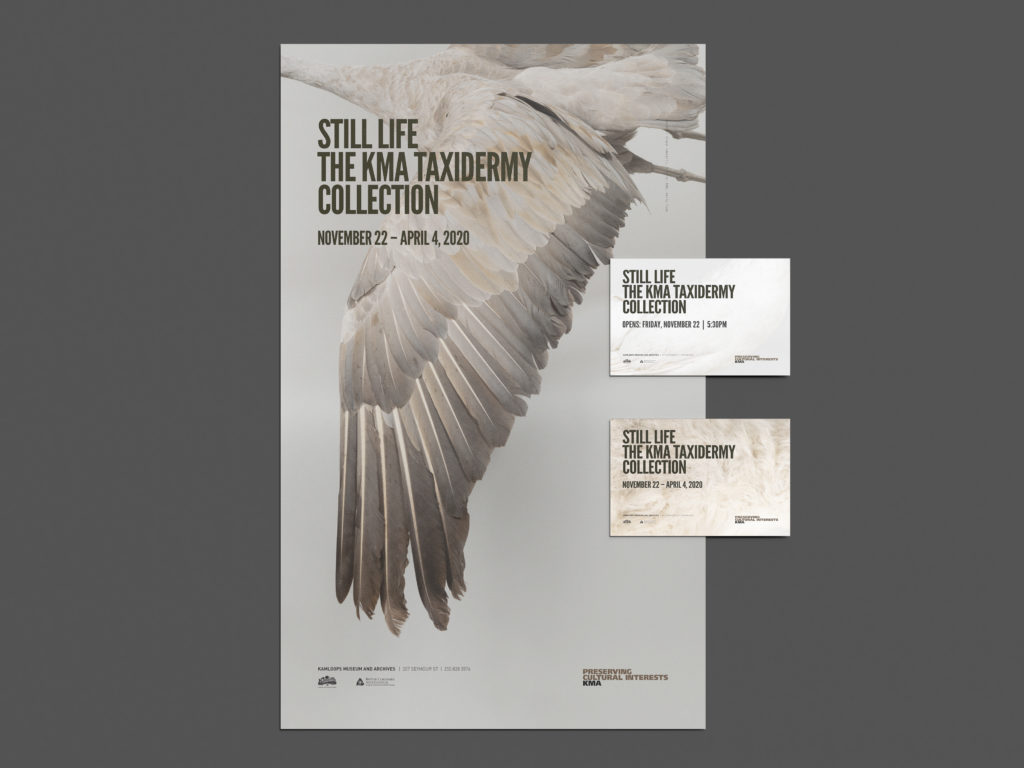Full suite development, design, naming, identity and conceptual framework for presenting the entirety of the Kamloops Museum’s taxidermy collection publicly for the first time. Still Life was developed to showcase taxidermy as a quintessential museum object or genre, as a means to point a finger back at the Museum itself as a non-neutral purveyor of historical knowledge.
More: Kamloops Museum and Archives
Installation photos: Kelly Funk Photography
Mockups: Anthony Boyd Graphics
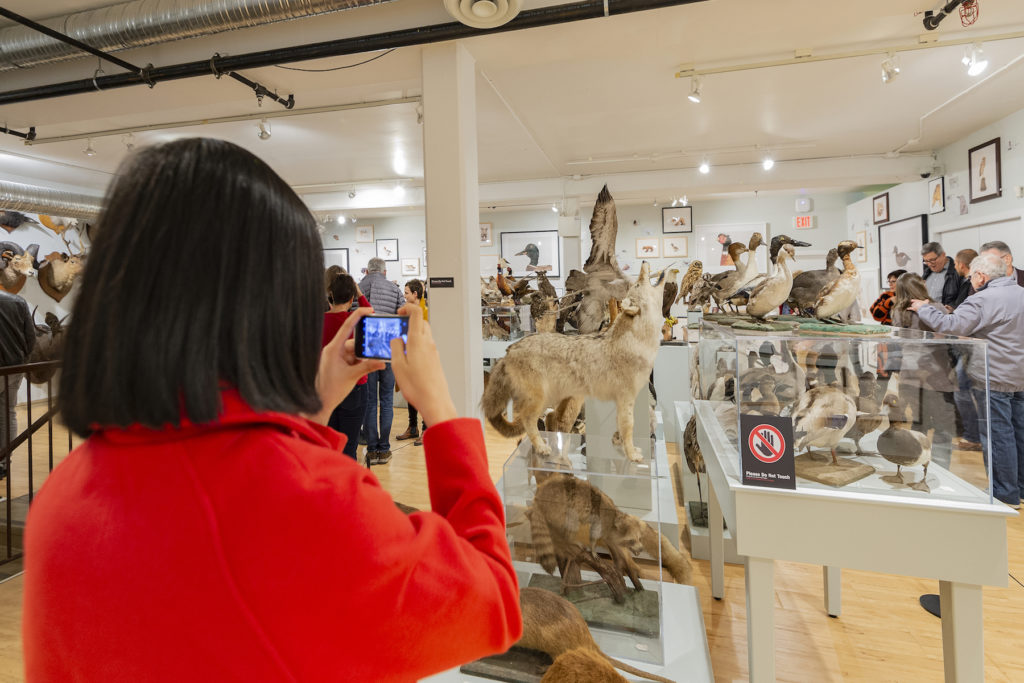
The Museum many people in North America and Western Europe are most familiar with is a product of the Victorian Age; and an expression of a larger project to create educated citizens. Museums gained momentum and popularity during this time in areas first in and then outside of major world cities. Taxidermy—cheap, accessible and offering compelling knowledge of the natural world— became a common and important feature of these new public spaces of learning.
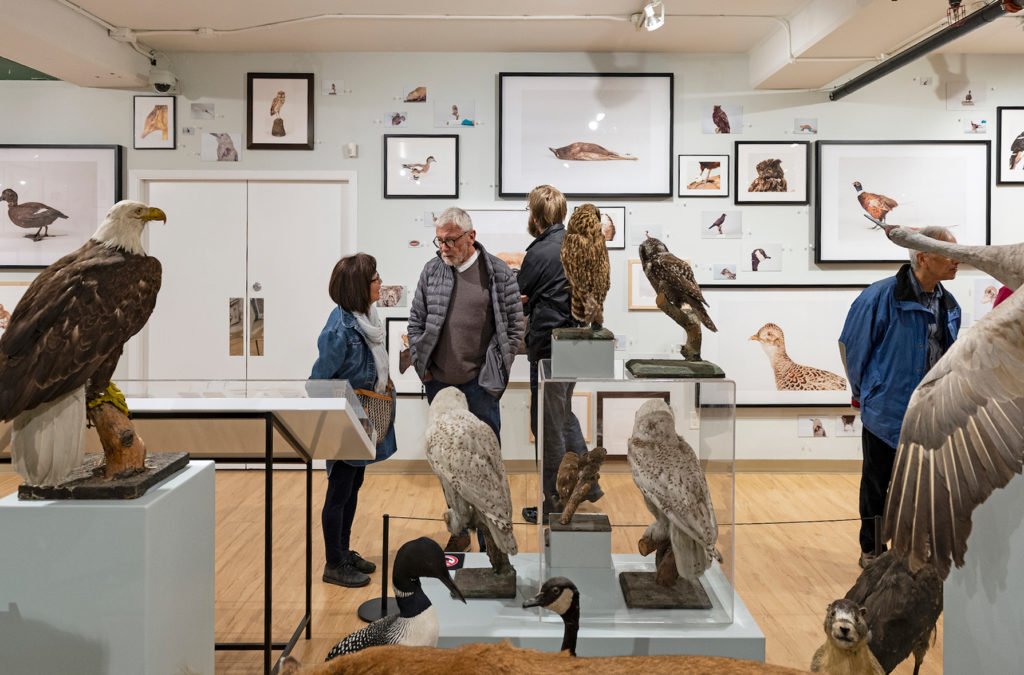
By connecting visual specimens to descriptive textual information, Museums enjoy a connection to scientific ways of securing understanding. By comparison: it is one thing to come to understand a mule deer as something that is part of the same interdependent reality you belong to: something that may pass close to you, a life you take in order to nourish your own, the fur you use to prevent your body from exposure, the bones you use to hunt or carve or make art; the yielding allowance you make for honouring the animal as Nature’s processes reclaim it into the land. It is another thing to come to know a mule deer by first killing it, embalming and removing its organs and fluids in order to arrest all processes of decomposition, measuring it, photographing it, classifying naming it in Latin, then placing it behind glass next to some textual information and specimens of similar ilk inside of a public building.
Catalogue
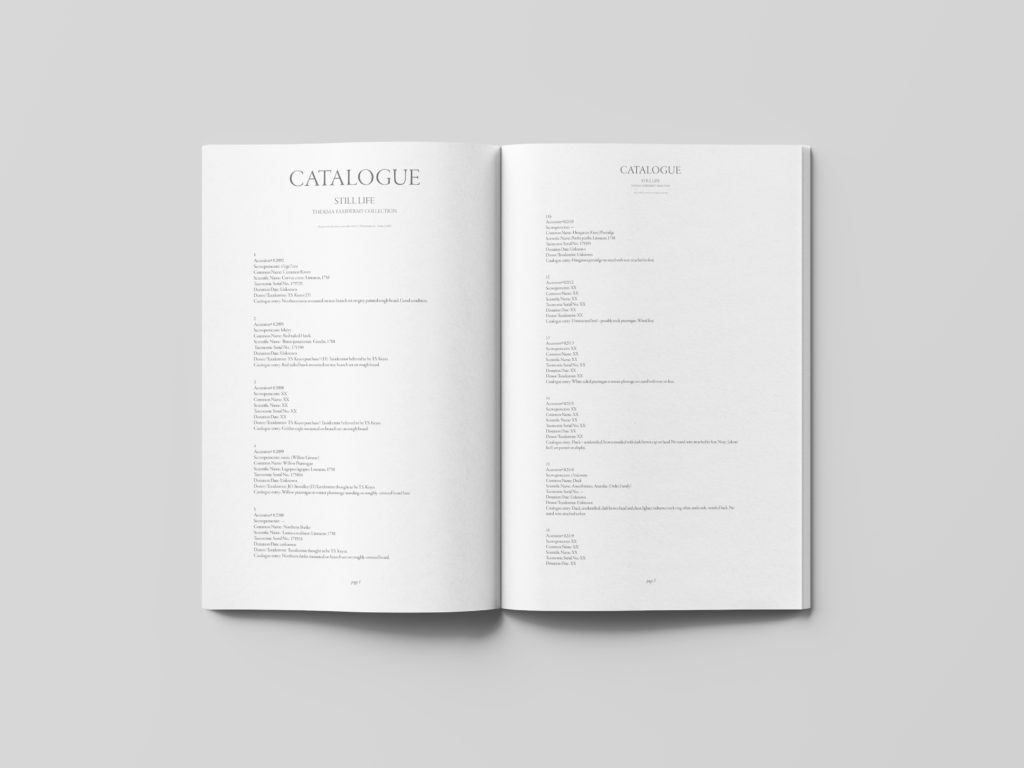
Still Life began by presenting the taxidermy on display as part of a larger set of inherited process for making or acquiring knowledge. Specifically, as something that exists in Museums as a part of a catalogue, which is an evolving document that stores information about all of the Collection and, by proximity, all of the knowledge contained in the Museum. But by placing this document in contexts with other possible ways of knowing, it also proposes the catalogue as a living document that contains space for you to amend, add or clarify information.
Promotional Materials
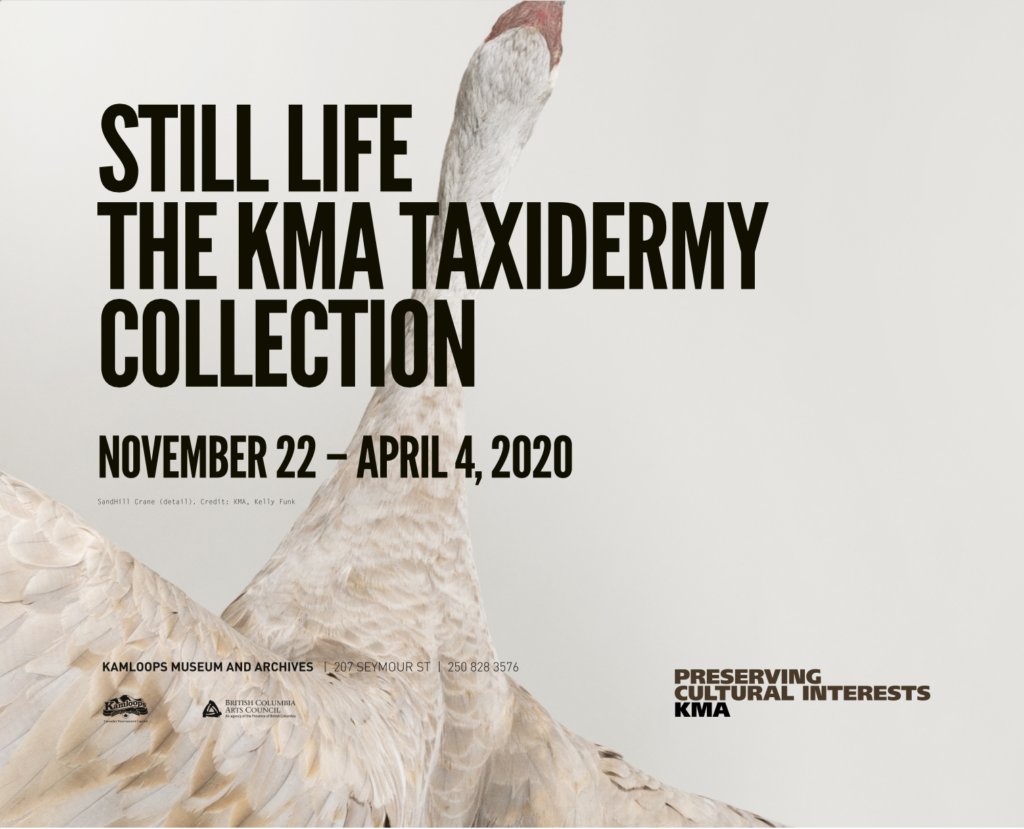

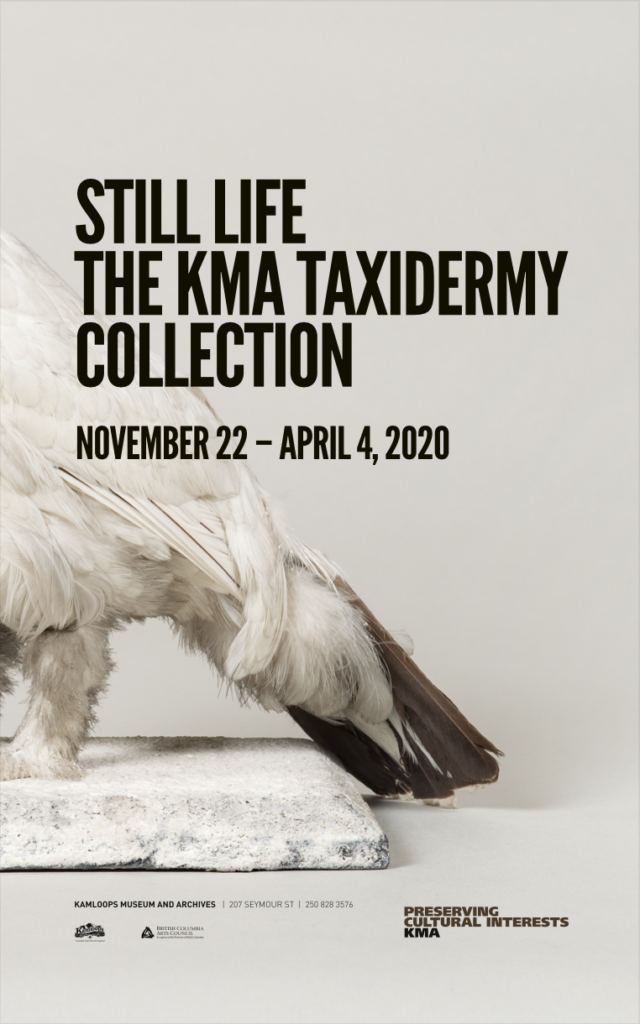
Two full page ads
